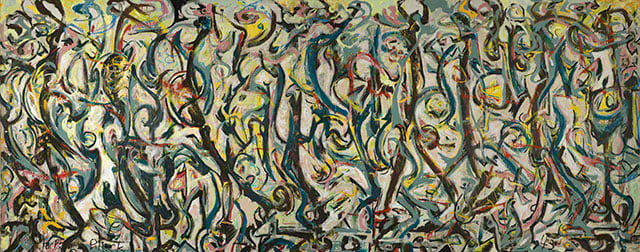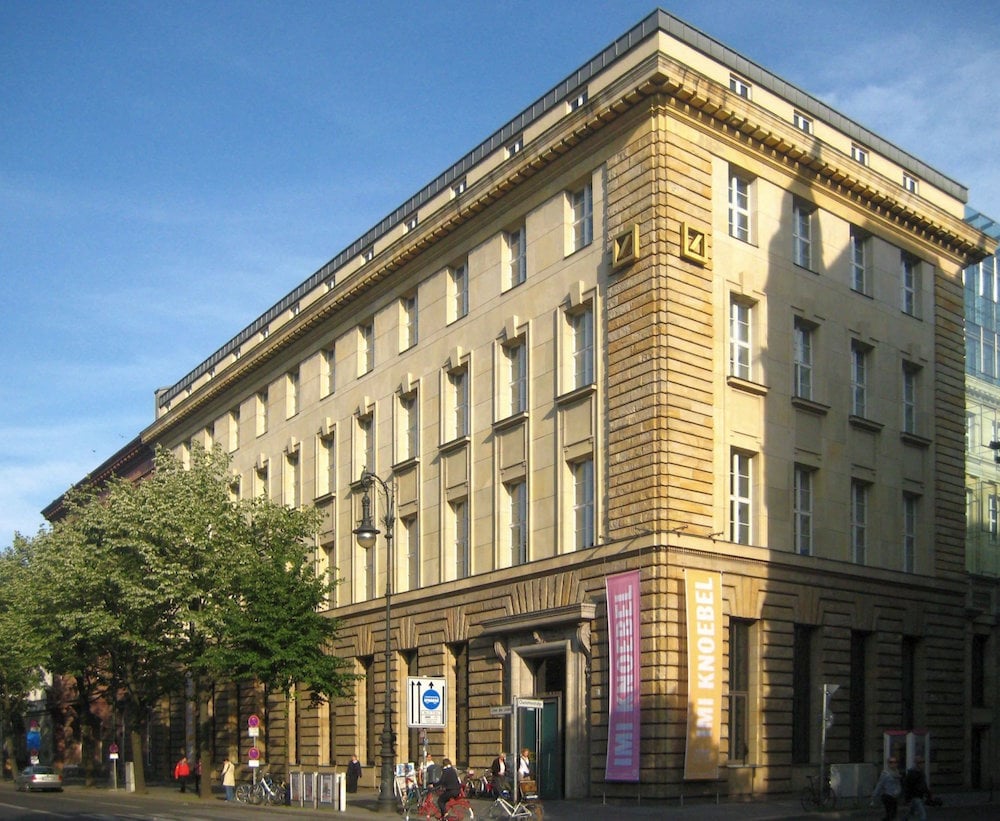Art & Exhibitions
Jackson Pollock’s Most Famous Painting Goes on View in Berlin
'Mural' (1943) catapulted the artist to fame.

'Mural' (1943) catapulted the artist to fame.

Henri Neuendorf

Jackson Pollock’s seminal Mural (1943) has gone on view at Berlin’s Deutsche Bank KunstHalle, alighting in the German capital after a summer outing in Venice, where the famous work has been on view since April after undergoing extensive restoration at the Getty Conservation Institute in Los Angeles.
The Berlin exhibition explores the influences, inception, and creation of the work, as well as the substantial effect the painting has had on art history.
The legendary painting was commissioned by Peggy Guggenheim after her advisor, the art dealer Howard Putzel, urged her to allow Pollock to express himself in a large format. The artist did not disappoint, delivering the stunning 2.4 x 6 meter (7.8 x 19.6 feet) painting which hung in the entrance hall of Guggenheim’s New York apartment.
Pollock described the artwork as “a stampede,” and compared it to “every animal in the American West, cows and horses and antelopes and buffaloes […] charging across that goddamn surface.”

Jackson Pollock Mural (1943)
Photo: Getty Museum, Los Angeles
The influential American art critic Clement Greenberg famously praised the painting as “great art,” and called Pollock “the greatest painter this country had produced.” The artist’s career was launched, and art history written.
Before moving to Venice in 1948, Guggenheim donated the work to the University of Iowa’s Museum of Art (UIMA). The collector wanted to acknowledge the university’s arts program and increase the exposure of Pollock’s work around the US.

The painting is on loan at the Deutsche Bank KunstHalle from the University of Iowa Museum of Art.
Photo: tripninjaz.com
Since a flood destroyed the UIMA building in 2008, the university’s collection—which was saved—has gone on several loans to alternative locations while the new building is under construction.
According to DB Art Mag the painting’s restoration has given it a new lease on life. The removal of a coat of varnish from a previous conservation effort in 1973 has restored the artwork’s radiance, offering viewers a new visual perspective on one of Pollock’s most important works.
As the Guardian describes, the restoration also did away with some legends surrounding the work. Pollock’s widow, the artist Lee Krasner, used to describe how, overcome with anxiety, Pollock would stare at the white canvas meant for Mural for weeks, until suddenly creating the whole thing in a single night. A romantic notion. Restorers found layers that show Pollock worked on the piece for weeks.
Legend also has it that Mural wouldn’t fit through the door, so Guggenheim’s friend Marcel Duchamp cut it down. Again, restorers found no evidence of such an alteration.
“Jackson Pollock’s “Mural”: Energy Made Visible” runs from November 25, 2015–April 10, 2016 at Deutsche Bank KunstHalle, Berlin.